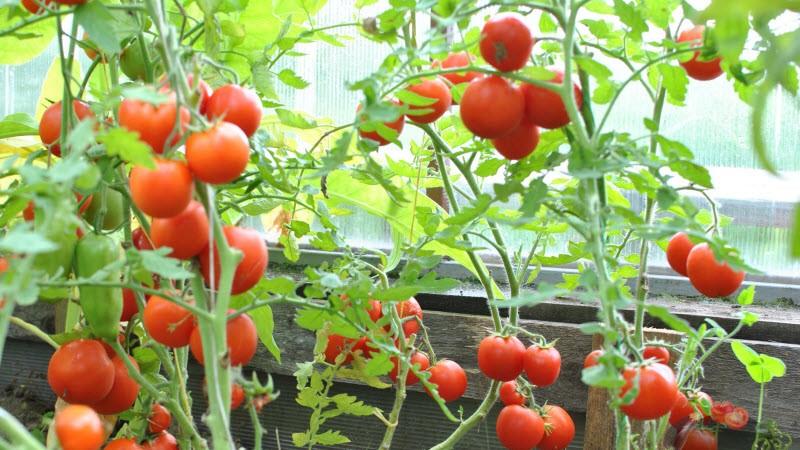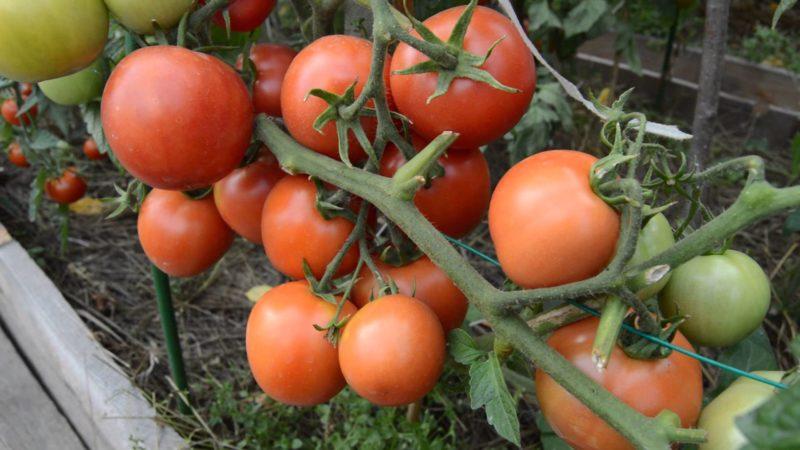Features of growing tomatoes Sanka
The first tomato in the season - what are they? These firsts were rushing to our table and had not yet had time to dial a bright red color. They are still low-aromatic and a little tasteless. But we buy them anyway to add to our first summer vegetable salads. One of the earliest varieties of tomatoes ripening in Russian latitudes is Sanka. Gardeners speak about him differently.
Let's find out more about Sanka tomato and analyze it advantages and disadvantages.
The content of the article
Characteristics and description of tomato varieties
Sanka tomatoes are an early variety. The seed producers on the package promise that the tomatoes will ripen 80-90 days after germination.
reference... Due to its early maturity, the Sanka tomato variety is very popular, especially in Russian regions with short summers.
The bush is undersized - up to 50-70 cm in height. Determinate and compact. Does not require pinning. Sanka is grown both in the greenhouse and in the open field.
Fruit
Tomatoes grow bright red. The very first fruits may be pale. Fruits are medium to small in size. The weight of tomatoes is up to 100 g (usually 70-80 g). Admire these handsome men in the photo:

5-7 tomatoes grow in a brush.
Yield
Up to 2.5 kg of tomatoes are harvested from one bush. This means that the variety has a good yield.
Pros and cons of the variety
Sanka is often called "the sort for the lazy." And this is true, because this variety has many advantages:
- early, long and productive fruiting;
- bushes do not need to be pinned;
- the size is good for canning.
At the same time, it has disadvantages, namely:
- not too pronounced tomato taste (especially in the first fruits);
- poor resistance to disease.
Growing features
Tomato seeds Sanka are planted on seedlings (like most tomatoes in Russian latitudes) or directly into the soil under agrofibre. Seeds are planted on seedlings in March, in the ground - in May.
The seedlings are planted in the main place, maintaining a distance of 40-45 cm between plants in a row. The same distance is left between the rows. Planting density is 5-6 bushes per square meter of area.
Top dressing
With proper care and feeding, the variety gives good yields. During growth, flowering and ripening, experienced gardeners are advised to feed the bushes with complex fertilizer three times.
This is best done during the tomato growth phases, when the bushes have:
- buds;
- flowers;
- fruit set.
Important! Do not apply fresh manure under the tomatoes. With it, the bushes will begin to grow green mass and the fruits will get little.
A good result is given by feeding with an ash-boron mixture. Wood ash or ash is collected for her. For 1 liter of ash add 10 liters of water. 0.5 teaspoon of boric acid powder is added to the solution.
Attention! It is recommended to dissolve boric acid crystals in hot water.
The resulting mixture is thoroughly mixed and foliar feeding of tomatoes is carried out (the plant is sprayed with an ash-boron solution). The solution must cool before application.
Care
Caring for Sanka tomatoes, in addition to dressing, consists in:
- weeding;
- watering;
- preventive measures to protect against diseases and insect pests.
Prevention of diseases and pests
Seed producers claim high resistance to late blight. Those gardeners who plant tomatoes in the early stages confirm that plants are practically not affected by late blight.
From pests and diseases will help the rules of observing crop rotation and folk remedies for prevention (they are preferable to "chemistry"). For example, garlic baths can help repel pests. A solution of 150-200 g is prepared for them garlicinfused in 5 liters of water for 3-4 hours. The solution is sprayed onto the plants.
Reviews of gardeners about the variety
Tomato growers leave different reviews about the Sanka variety:
Viki1967: “I plant seeds in the ground in early April under a shelter. The germination rate is always good. I noticed a feature: first, the fruits are on a medium-sized bush, and then they become smaller. But still good for pickling. They grow until the first frost. I tie up the bushes, although you don't have to. The fruit has little sweetness and the classic tomato flavor. "
Neilya, Sverdlovsk region: “Dense fruits. Ideal for salads. But also great for seaming, they look great in the bank. I plant this variety because it is very early. "
Anna, Serpukhov: "I didn't like the tomatoes, they are sour."
Antonina Evgenievna, Tula: “With this variety I always have a good harvest. Tomatoes ripen gradually, which prolongs the harvest period. Last year, the last red tomatoes were picked from the bushes in September. But there were still brown and green tomatoes on the plants. They matured outside the bushes of the house on the windowsill. "
Nikolay, Ukraine: “Bushes with good root system, powerful. On a 10-point scale, I give the highest mark. I love this variety for its unpretentiousness. Since the variety is early, it manages to ripen even before late blight begins to spread. "

Let's sum up
Tomato variety Sanka is among the first to bring its tomatoes to gardeners in early summer. They grow it in order to please themselves with the first summer tomatoes as early as possible. True, how many people, so many opinions. Some, having grown this variety, leave it in their pets forever. Others say there is no sweetness or tomato flavor in this tomato. Probably, this can be forgiven to the tomato for its very early ripening period. And even better - plant this variety yourself and form your own opinion about Sanka tomatoes.